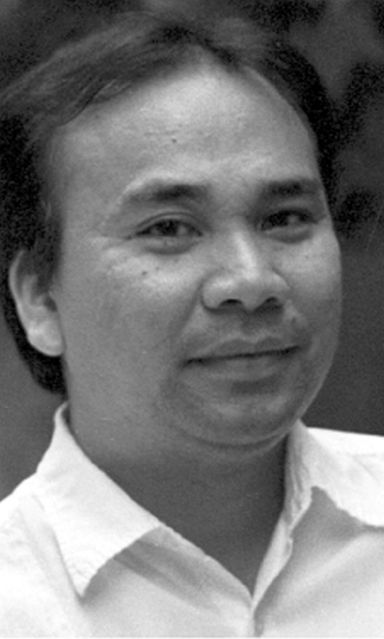
BERSALES
Seventy-two years ago last Tuesday, August 15, Japan formally announced its unconditional surrender in a broadcast made for the first time by Emperor Hirohito.
The Atlantic Monthly already published the tense-filled and the nerve-wracking story behind the decision and the eventful recording of the imperial rescript of surrender in its August 7, 2015 issue, which I invite the readers to check online.
Unfortunately for the Philippines, so very little has been written or published on the war, and those that exist are understandably from the perspective of the military and the guerrilla resistance movement. And no eyewitness interviews were ever recorded on a national scale when the Singaporeans were doing it in the 1970s.
There are only about slightly more than a handful of books written of WWII in Cebu, for example. Of these, only one appears to have been published immediately after the war, that is the thin volume in Cebuano that Barili-native Isidro Abad published in 1946 entitled, “Ang Sugbu sa Panahon sa Gubat.” This was followed in 1947 by the Bogo politician Celestino Rodriguez’s “Episodios Nacionales: Horas Tragicas de Mi Pueblo,” obviously in Spanish.
Two others were soon published, in English this time, by Cayetano Villamor. The most remembered and coveted, however, are Col. Manuel Segura’s “Tabunan: The Untold Exploits of the Famed Cebu Guerrillas in World War II,” published in 1975 and “The Koga Papers” in the 1990s. Then there was our coffee table book “The War in Cebu” which we released through USC Press in 2015 with Dr. Resil Mojares, Col. Dave Tayor, Bobit Avila and Dave Colamaria. The latest is Dr. Romola Savellon’s “In Death’s Shadow: Stories of Kempeitai Atrocities in Cebu, 1943-45” which I made sure was printed by USC Press in time so that I could bring it here today.
Bohol fares worse than Cebu, unfortunately, counting I believe only one book as does Negros Oriental. There are also two or three books about the war as it happened in Northern Mindanao.
And so it comes as a fresh breeze that the National Historical Commission is hosting the International Conference on the 75th Anniversary of World War II in the Philippines here at the Holy Angel University (HAU) in Angeles City today and tomorrow. I will be joining 28 other paper presenters, including foremost WWII expert, my good friend and the keynote speaker Dr. Rico Jose, who will tackle facets of the war as part of a weeklong series of events to remember those dreadful years in our nation’s history.
If we go by the topics of my fellow speakers here, one will immediately notice that there is still so much that can be said about Manila and Luzon and their experiences in the Japanese Occupation, with about 16 speakers and presenters, and even so much more that needs to be known about the rest of the country.
I am the only one who will speak on Cebu, for example, while Dr. Earl Cleope of Silliman University will be also by his lonesome on Negros Oriental.
My friend in Naga, Dr. Danilo Gerona, who has shed new light on Magellan and his ill-fated expedition in a recent publication, on the other hand, represents his region and will talk only of the liberation of Naga.
Emil Justimbaste, who has written earlier on Leon Kilat in Cebu, will talk on Leyte guerrillas.
The Western Visayas has one speaker, Dr. Randy Madrid, on Col. Macario Peralta and the guerrilla movements there, while Mindanao has two, one on Col. Wendell Fertig’s “Free Philippines” by Jonathan Catubig of Pantukan National High School, and one on the death march not in Bataan but in Mindanao, by Atty. Robert Donesa of Baliuag Polytechnic.
Speaking from a first person perspective is National Artist for Literature F. Sionil Jose, born in 1924, who will talk on the topic, “Living in a Society Full of Japanese Spies.”
The contribution of the Chinese in the Philippines is also discussed courtesy of, who else, but Teresita Ang See of Kaisa Heritage Center. And, of course, the role of women is also tackled by Dr. Luisa Camagay of UP Diliman through an analysis of women’s memoirs.
It is clear that the NHCP intends this conference to be encompassing and hence the representation from all over the country.
There are still a lot of missing gaps, however, partly perhaps because no one has published anything from out of these places or the ones that did have long passed and no one has followed up their work.
The worst is of course if in places like Samar or Sulu or Pagadian City, where I was born, or in the Ilocos, no one has written about the war.
I believe conferences like this take those unknowns out into the open and I hope this is just the beginning of more meetings and more publications to come out.
As North Korea and the United States act like children playing with fire using nuclear weapons, it is never too late to remember the war, even by those of us who only read the pain and suffering the previous generations went through. And one way is to write those memoirs of our grandparents.